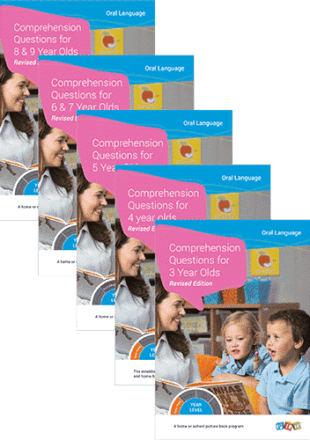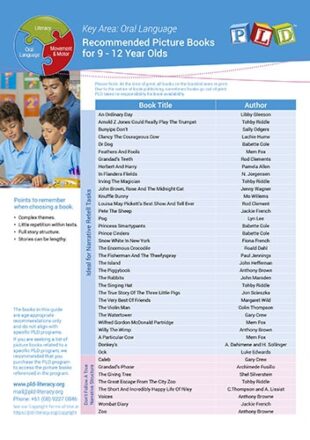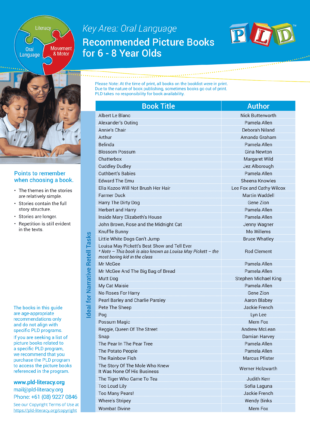Age
Showing 353–368 of 458 results
-
Sale!
Year 1 Expanded Classroom Decodable Reading Books Multi-Set (6 x Sets 4 to 10)
PLD’s Decodable Reading Book Bundle comprises seven sets for Foundation – 170 books in total. Each set includes a carefully curated selection of titles that align with various phonics stages, ensuring a structured and effective reading experience. This Classroom Bundle comprises six copies of each full set (Sets 1 – 7), catering to larger groups or to provide as home readers for students. The Classroom Bundle consists of 1,020 books in total.
This Classroom Bundle comprises six Full Sets of PLD’s Decodable Reading Books for Year 1 (Sets 4 – 10). That is 1,050 books in total!
From $1,228.25 -
Sale!
Year 1 Expanded Decodable Reading Books Bundle (Set 4 to 10)
PLD’s Decodable Reading Book Bundle comprises four sets for Year 1 – 175 books in total. Each set includes a carefully curated selection of titles that align with various phonics stages, ensuring a structured and effective reading experience.
PLD’s Decodable Reading Books for Year 1 are designed to support early readers by focusing on phonics and simple word patterns. The books introduce phonics
From $1,228.25 -
Sale!
Year 1 Integrated SSP Kit & Essential Decodable Reading Books Bundle (Set 7 to 10)
This bundle is expertly designed to provide a strong foundation for early literacy by combining SSP resources with engaging decodable texts. Together, they create a cohesive learning experience that helps young readers develop essential phonics skills while enjoying the reading process.
This bundle is expertly designed to provide a strong foundation for early literacy by combining SSP resources with engaging decodable texts. Together, they create a
From $1,365.13 -
Sale!
Year 1 Integrated SSP Kit & Expanded Decodable Reading Books Bundle (Set 4 to 10)
This bundle is expertly designed to provide a strong foundation for early literacy by combining SSP resources with engaging decodable texts. Together, they create a cohesive learning experience that helps young readers develop essential phonics skills while enjoying the reading process.
This bundle is expertly designed to provide a strong foundation for early literacy by combining SSP resources with engaging decodable texts. Together, they create a
From $1,929.50 -
Young Learners SSP Kit Bundle (Early Years to Year 2)
PLD’s Integrated SSP Kits streamline the teaching experience within the framework of PLD’s Structured Synthetic Phonics (SSP) program. This bundle is designed to provide consecutive Early Years and junior primary classes with the teaching and learning materials needed to implement SSP in a consistent manner across classes and year levels. Together, these four kits create a cohesive learning experience that help young learners develop essential phonics skills while establishing strong foundations in reading, spelling and writing.
PLD’s Integrated SSP Kits streamline the teaching experience within the framework of PLD’s Structured Synthetic Phonics (SSP) program. This bundle is designed to provide consecutive
From $2,371.50$2,371.50 incl. GST[flipbook-popup id=''][/flipbook-popup] -
Sale!
Comprehension Questions for 3 to 9 Year Olds – Full Set
The full set of Reading Comprehension Questions contains five resources for students aged 3 to 9 and aims to develop reading comprehension in Junior and Middle Primary classrooms. Buy all five resources in a bundle and save 15%. The full set contains the following 5 resources: Comprehension Questions for 3-Year-Olds Comprehension Questions for 4-Year-Olds Comprehension […]
The full set of Reading Comprehension Questions contains five resources for students aged 3 to 9 and aims to develop reading comprehension in Junior and
From $350.65 -
Wikki Stix – Classroom Pack
A supplementary resource suitable to use with certain PLD resources.
Wikki Stix are made of yarn and food-grade nontoxic wax. They have been manufactured in the USA for over twenty years. Slightly tacky, they stick
$35.00 -
Wikki stix, primary pak
A supplementary resource suitable to use with certain PLD resources.
Wikki Stix are made of yarn and food-grade non toxic wax. They have been manufactured in the USA for over twenty years. Slightly tacky, they
$18.50 -
Wikki stix, neon pak
A supplementary resource suitable to use with certain PLD resources.
Wikki Stix are made of yarn and food-grade non toxic wax. They have been manufactured in the USA for over twenty years. Slightly tacky, they
$18.50 -
Recommended picture books to read to 9, 10, 11 & 12 year olds
A recommended reading book list that promotes the development of oral language skills in children aged 9-12 years old.
The books in this guide outline quality age-appropriate recommendations only and do not align with specific PLD programs. The lists have been created by speech
-
Recommended picture books to read to 6, 7 & 8 year olds
A recommended reading book list that promotes the development of oral language skills in children aged 6-8 years old.
The books in this guide outline quality age-appropriate recommendations only and do not align with specific PLD programs. The lists have been created by speech
-
Recommended picture books to read to 5 year olds
A recommended reading book list that promotes the development of oral language skills in children aged 5 years old.
The books in this guide outline quality age-appropriate recommendations only and do not align with specific PLD programs. The lists have been created by speech
-
Recommended Picture Books to Read to 4 Year Olds
A recommended reading book list that promotes the development of oral language skills in children aged 4 years old.
The books in this guide outline quality age-appropriate recommendations only and do not align with specific PLD programs. The lists have been created by speech
-
Phases of Writing Development
A milestone and information sheet which identifies the four phases of writing development. It includes age related examples.
Just as children make many “mistakes” or approximations as they learn to talk, the development of writing skills is also a process. At each phase
-
Getting Ready for Writing (Pre-writing patterns) Factsheet
A downloadable factsheet which identifies the six basic (Pre-writing) patterns that form the basis of all alphabet letters.
Throughout the early years, children are encouraged to participate in a range of fine motor activities that develop: their manipulative skills a dominant hand the
-
A Whole School Approach to Developing Narrative Skills
An information sheet outlining a step by step, whole school approach to developing narrative skills using PLD’s programs.
Research focused on narrative ability has repeatedly reported a correlation between literacy and academic achievement. Narrative training programs have also been shown to produce positive


















